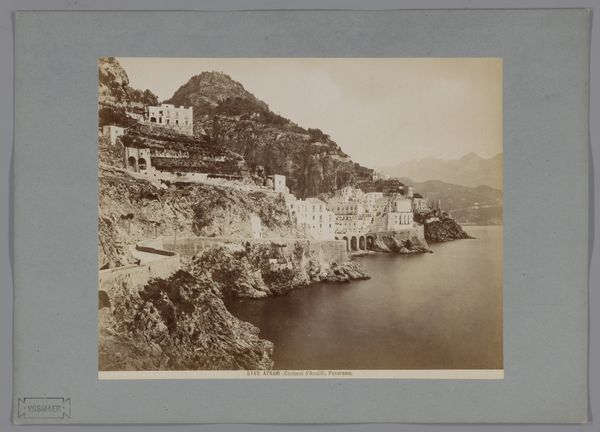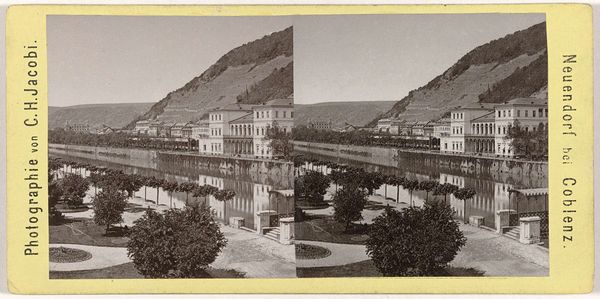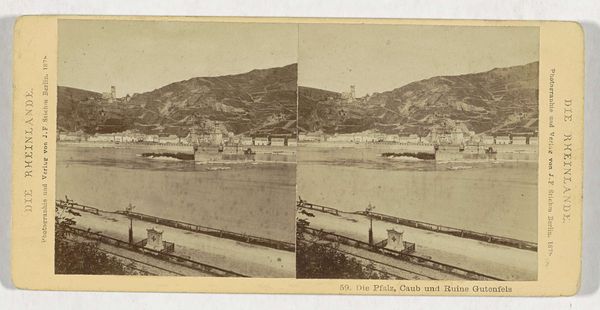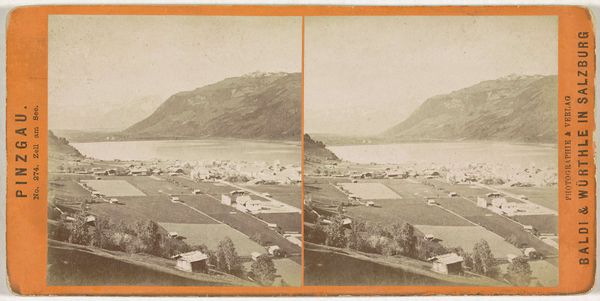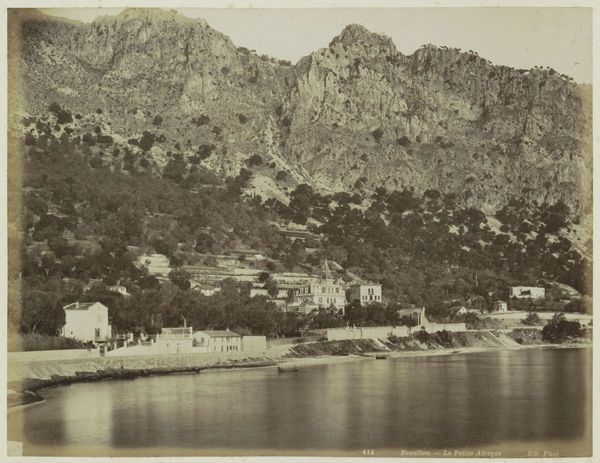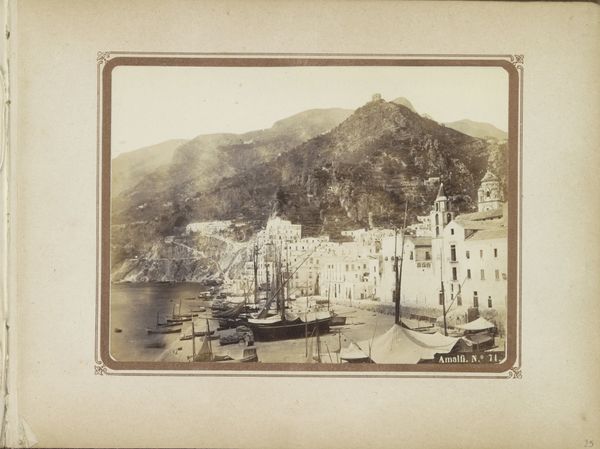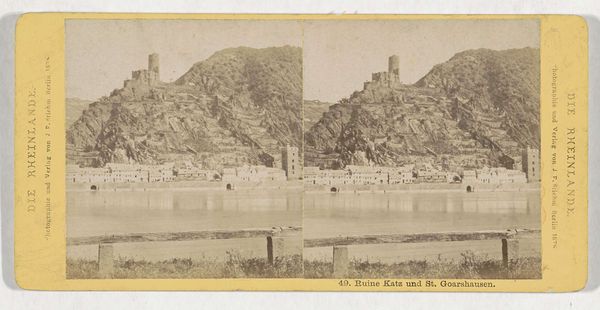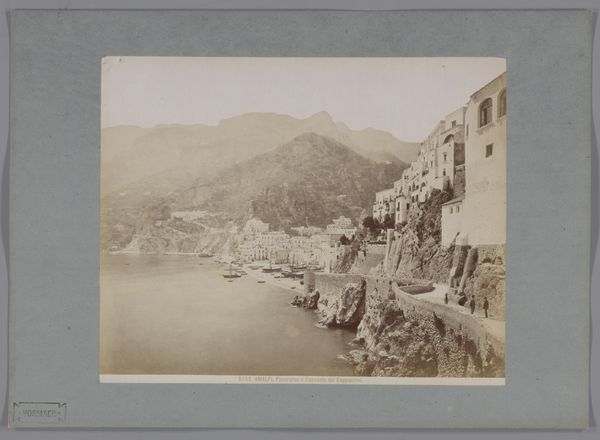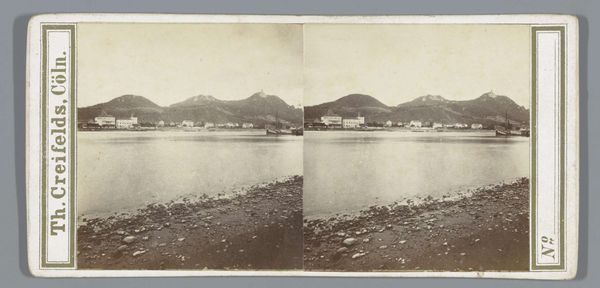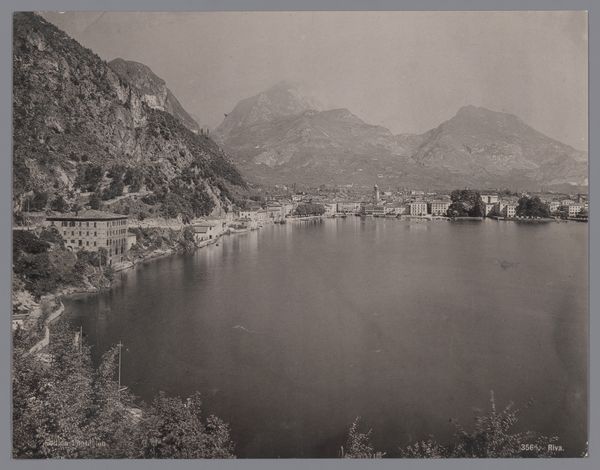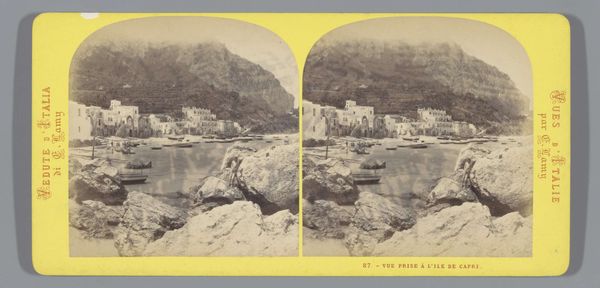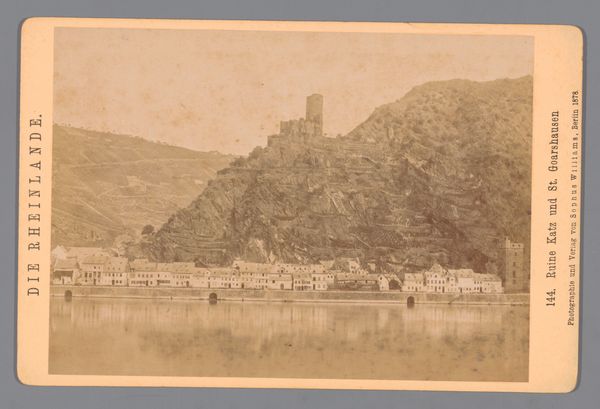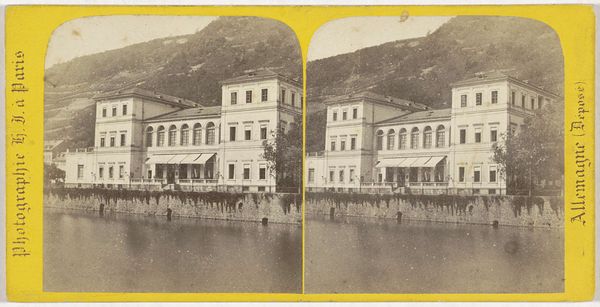
photography, gelatin-silver-print
#
impressionism
#
landscape
#
river
#
photography
#
gelatin-silver-print
#
cityscape
Dimensions: height 88 mm, width 178 mm
Copyright: Rijks Museum: Open Domain
Editor: This is "Gezicht op Bad Ems en de Mooshütte," a gelatin silver print, probably created between 1868 and 1876, by Carl Heinrich Jacobi. It depicts a German town nestled between a river and a dramatic hillside. It’s interesting how the print mimics the stereoscope viewers common at the time. What can you tell us about the historical context in which it was made? Curator: Well, photography in the 19th century was still gaining traction as a means of documentation and artistic expression. Its emergence deeply influenced what constituted 'art'. Views like this catered to a growing market for tourism. Stereoscopic images like these offered a kind of immersive experience that fueled popular imagination. The burgeoning middle class saw the work as a way of promoting education and conveying idealized representations of modernity. Editor: So the image wasn't just documenting a place, it was selling a lifestyle, wasn't it? Kind of a proto-Instagram? Curator: Exactly. Think about it: scenic views became commodities. Photography shaped perceptions of the places. It both captured and constructed ideas of beauty, leisure and social aspiration. Editor: How were landscapes like these viewed differently, for example, than history paintings at the time? Curator: History paintings often served nationalistic or moralizing purposes, whereas these scenic photos aimed for wider audiences eager for escapism and picturesque consumption. One bolstered national identity; the other global tourism. But that being said, both are tools with similar impact! Editor: That’s fascinating. It really reframes how I see photography of that period. Thanks! Curator: My pleasure. Understanding the marketplace helps us interpret the social function of an image like this, beyond just aesthetics or pure representation. It allows us to delve into the world it was intended to produce.
Comments
No comments
Be the first to comment and join the conversation on the ultimate creative platform.
